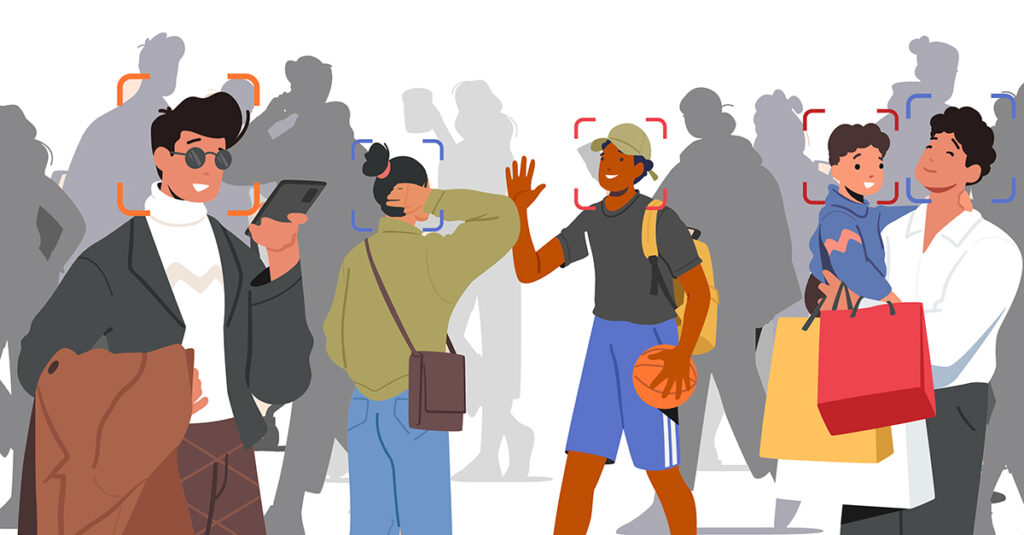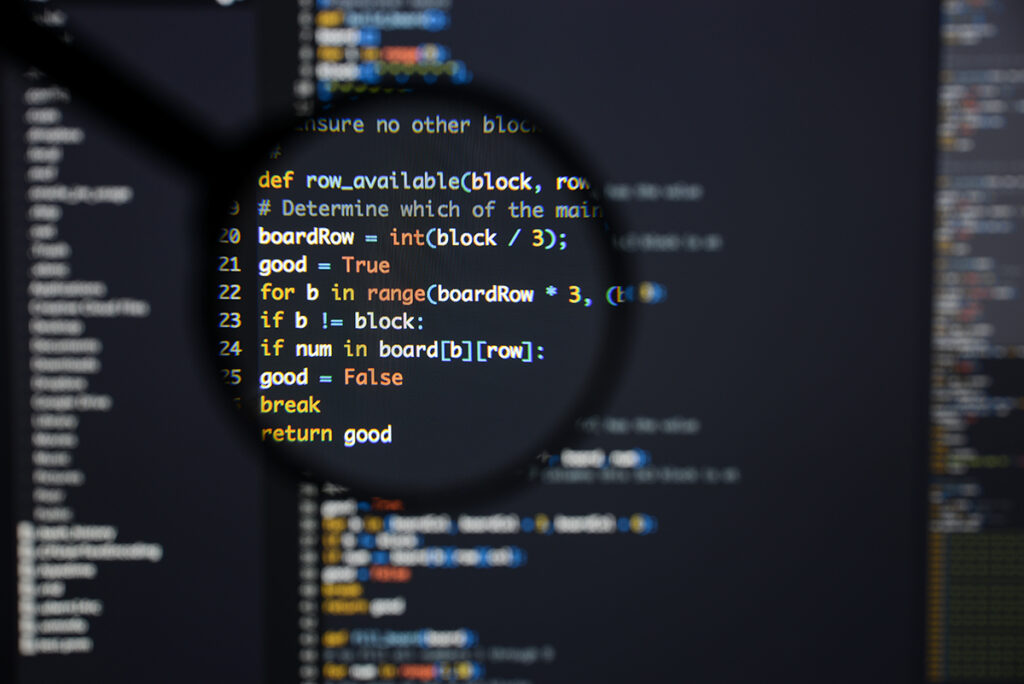

What Algorithms Are and What You Should Know About Them
This article is part one of “What Algorithms Are and What You Should Know About Them” by RDI Communications Specialist Martti Asikainen and senior reacher Janne Kauttonen . After this you’re ready to dive into the more technical concepts of algorithms in the article part two. You can find the second part of the article here.
Martti Asikainen & Dr. Janne Kauttonen, 20.3.2025

Algorithms are a central part of modern technology. They are like precise instructions that perform defined operations step by step. At their simplest, an algorithm can arrange numbers in series, while at their most complex, they can direct not only the operation of artificial intelligence but also influence the flow of information we receive in the form of recommended content.
Haven’t you sometimes imagined that you’re completely free in your decisions when clicking items into your shopping cart on Amazon or sinking into the depths of your couch with Netflix? In reality, algorithms guide up to a third of the choices made on Amazon, and according to Netflix, 80% of viewing decisions are the result of subtle algorithmic guidance (Chhabra 2017; Bischoff 2023).
In other words, that internal feeling that you found the perfect product or addictive series is just a skillfully created illusion. Behind the scenes, an intelligent system is analyzing every search, click, and purchase from the crumbs of your digital footprints to create an accurate profile, based on which it offers content tailored just for you, from the news you see to music recommendations and Friday night movies.
Companies are also working to strengthen algorithms with AI agents developed specifically for them, which also take into account contextual behavior, such as seasonality and prevailing trends (Ologunebi et al. 2024). They combine information from our previous adventures so cleverly that we repeatedly end up finding, as if by chance, exactly what we didn’t even know we were looking for.
And there we sit, content, imagining that we are in control of our own lives, even though algorithms took on the role of navigator more than a decade ago. In that sense, we are like playing hide and seek with algorithms—they see us, but we don’t always see them. But what are algorithms really, how do they work, and how could they be successfully utilized to develop business?

From Algorithms to Computer Programs: What They Are and How They Work
Algorithms are a series of coded procedures by which input data is transformed into a desired output based on predetermined calculations (Gillespie, 2014). In a way, they are like digital chefs who follow a recipe with precision. Following the view of German professor Sebastian Schelter, first the ingredients are gathered, which are the initial data and input, after which the recipe is followed step by step (Zeller 2020). The end result, if not a five-star dinner, is at least an everyday delicacy.
Algorithms solve problems and perform tasks by always following predetermined instructions step by step. Although algorithms can be written in many ways—in ordinary language, programming languages, or even as flowcharts—programming languages are usually used with computers because of their formality, unambiguity, and standardization. When an algorithm is coded using a programming language, such as Python or Java, we typically speak of computer programs or simply programs rather than algorithms.

Technically speaking, every program, even traditional Microsoft Word, is one huge algorithm that accepts inputs and produces text files. In practice, however, most programs consist of a collection of several highly specialized algorithms that interact with each other and together form the program, much like individual musicians form a functioning orchestra.
In many cases, such as Amazon’s product recommendations, Tesla’s self-driving cars, airplanes, and numerous automated metro systems, algorithms have almost completely replaced human decision-making (Mahmud et al. 2022).
The downside of the system is that, like humans, algorithms are also susceptible to biases, which can make decisions unfair (Angwin et al. 2016). On the other hand, algorithmic decision-making also differs significantly from human decision-making (Van Giffen et al. 2022). Where human decisions are usually based on soft goals and compromises, algorithms always aim for a specific predetermined goal and only that goal (Luca et al. 2016). In most cases, however, algorithms serve as decision support (Acharya et al. 2018).
Traditional programs are based on a programmer writing an algorithm that defines how inputs are processed and what is output from the program. For example, a program takes in two numbers (x, y) and outputs their sum (x+y). Machine learning, on the other hand, represents a set of methods where the machine itself forms the rules for processing inputs. A machine learning-based program learns these rules directly from the given example data. The task of a machine learning algorithm is to build a new, internal model that adapts to the data. Consider feeding a machine learning program dozens of number pairs (input) and their sums (result); the program eventually recognizes the rule that adding two numbers produces the desired outcome—without this rule being predefined for it.
Machine learning is utilized, for example, in artificial intelligence applications, image recognition, and recommendation systems. However, machine learning is dependent on the data fed to it and its quality (Fenza et al. 2021). If the data contains biases, they can be reflected in the algorithm’s operation and the decisions it makes.
Diverse and Branching Algorithms
Algorithms in our lives are like unnoticeable roommates. Nowadays, you can only escape their sphere of influence by throwing your smartphone, computer, and all other digital gadgets out the window. So it’s not far-fetched to say that algorithms and companies might know you better than your friends or your mother.
In the United States, algorithms have already secured their place as the conductors of our lives. They wave the baton in workplaces, schools, and hospitals alike. Algorithms influence who gets their dream job, how shifts are distributed, what your child eats for lunch at school, and who gets to the top of the treatment queue in the hospital (e.g., Crispin 2021; McCormack & Schwarz 2023). They determine who gets a loan and who is rented the downtown two-bedroom apartment.
The family of algorithms is like a colorful and diverse family dynasty, where each member has their own special role and purpose. The family album contains many personalities. One focuses on organizing information, others on searching for or analyzing it, and a third decides which algorithm to call to solve a specific problem. Therefore, algorithms are usually divided into different categories according to their intended use. This versatility makes algorithms indispensable tools in both traditional programming and modern artificial intelligence and machine learning. Together, algorithms form the basis of all data processing.
Summary and Conclusions
Algorithms form the invisible backbone of our digital world, functioning as precise, step-by-step instructions that transform input data into desired outcomes. While seemingly simple in concept, they profoundly shape our daily experiences—from what we watch on Netflix to what we purchase online—often without our awareness. Companies continuously enhance these systems with AI agents that analyze our behavior patterns and predict our preferences with remarkable accuracy.

Beyond consumer applications, algorithms have become decision-makers in critical domains like employment, education, and healthcare. They range from basic sorting mechanisms to complex learning systems that adapt to data patterns without explicit programming. Modern machine learning algorithms can recognize patterns independently, though their effectiveness remains dependent on the quality of their training data.
For businesses, particularly SMEs, algorithms offer tremendous competitive advantages through customer segmentation, personalized recommendations, inventory optimization, and logistics planning. Implementation doesn’t necessarily require significant technical expertise, as many digital platforms already incorporate sophisticated algorithmic tools. By starting small and scaling gradually, even smaller organizations can harness algorithmic decision-making to operate more efficiently and compete with larger players in an increasingly data-driven marketplace.
In the future, algorithmic decision-making will only strengthen, and its importance for competitiveness will be further emphasized. For SMEs, it is of paramount importance to keep up with developments, as algorithms offer the opportunity to operate more nimbly and efficiently than competitors. We recommend contacting free services like the Finnish AI Region (FAIR), through which you can get advice and support in mapping and implementing algorithms as part of your business.
Contact us

Janne Kauttonen
Senior Researcher
+358 294471397
janne.kauttonen@haaga-helia.fi

Martti Asikainen
RDI Communications Specialist
+358 44 920 7374
martti.asikainen@haaga-helia.fi
References
Acharya, A., Singh, S.K., Pereira, V. & Singh, P. (2018). Big data, knowledge co-creation and decision making in fashion industry. International Journal of Information Management, 42 (p. 90-101). Elsevier. Amsterdam.
Angwin, J., Larson, J., Mattu, S. & Kirchner, L. (2016). Machine bias: There’s software used across the country to predict future criminals. And it’s biased against blacks. ProPublica. New York.
Bischoff, M. (2023). How Recommendation Algorithms Work—And Why They May Miss the Mark. Scientific American. Springer Nature. New York City.
Chhabra, S. (2017). Netflix says 80 percent of watched content is based on algorithmic recommendations. Mobile Syrup. Toronto.
Crispin, J. (2021). Job-hunting is stressful and humiliating enough. Now robots judge our résumés. The Guardian.
Fenza, G., Gallo, M., Loia, V., Orciuoli, F. & Herrera-Viedma, E. H. (2021). Data set quality in Machine Learning: Consistency measure based on Group Decision Making. Applied Soft Computing, 106. Elsevier. Amsterdam.
Gillespie, T. (2014). The Relevance of Algorithms. From Media Technologies: Essays on Communication, Materiality, and Society. The MIT Press. Cambridge.
Luca, M., Kleinberg, J. & Mullainathan, S. (2016). Algorithms Need Managers Too. Harvard Business Review. Brighton.
Mahmud, H., Namjum Isla, A.K.M., Ahmed, S.I. & Smolander, K. (2021). What influences algorithmic decision-making? A systematic literature review on algorithm aversion. Technological Forecasting and Social Change, 175. Elsevier. Amsterdam.
McCormack, S. & Schwarz, D. (2023). Biased Algorithms are Deciding Who Gets Hired. We’re Not Doing Enough to Stop Them. New York Civil Liberties Union. New York.
Ologunebi, J., Taiwo, E. & All, K. (2024). Digital Consumer Behavior in E-commerce: A Study of Amazon and Temu’s Customer Purchase Decision-Making Processes in the UK and the USA. Munich Personal RePEc. Munich.
Van Giffen, B., Herhause, D. & Fahse, T. (2022). Overcoming the pitfalls and perils of algorithms: A classification of machine learning biases and mitigation methods. Journal of Business Research, vol. 144, s. 93-106. Elsevier. Amsterdam.
Zeller, J. (2020). Algortimen sind wie Kochrezepte. Goethe Institute Belgiumin website.

